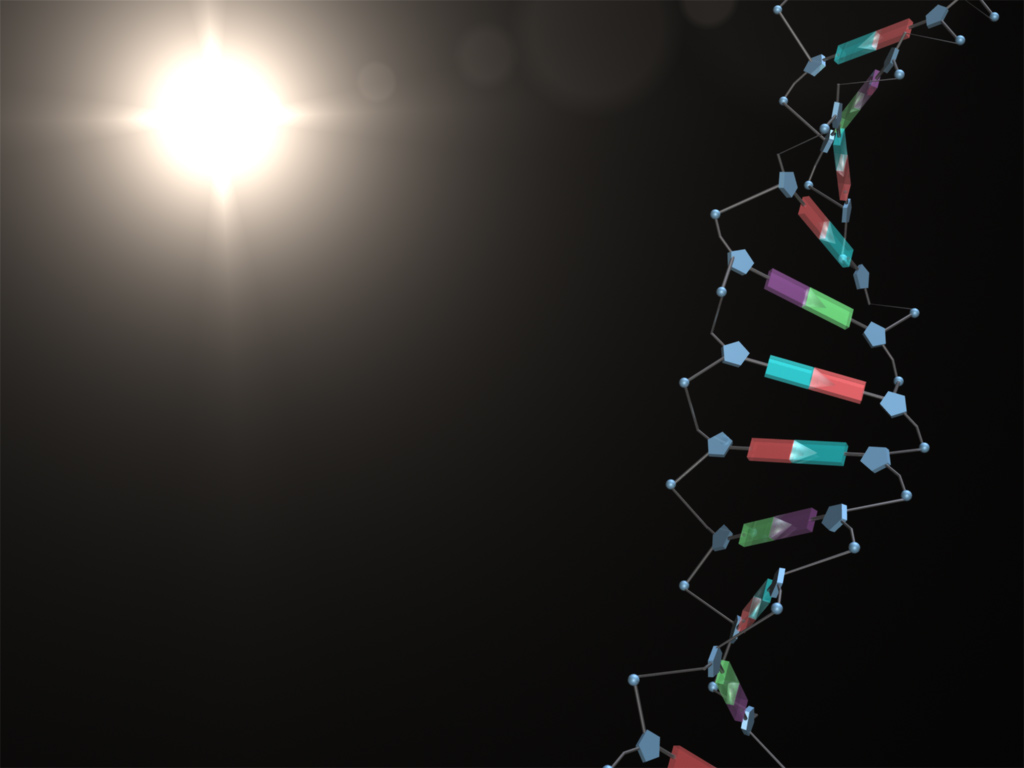When genes fly
Beaming DNA through space is next for leading geneticist
Amy Nordrum • October 28, 2013

[An artist's depiction of a double helix. Image credit: JFantasy via Wikimedia Commons]
When J. Craig Venter talks about the future, his colleagues tend to listen. He is widely renowned for discoveries that have rocketed genetic researchers into a new era of mapping and synthesizing DNA. Now, Venter believes that beaming genetic codes across space and re-assembling them into organisms once they reach the other end is the next big step. In fact, he says we’re already doing it.
Famed as the co-sequencer of the human genome and a pioneer of synthetic biology, or artificial life, Venter is chief executive of the J. Craig Venter Institute, a leading site for genetic research. The process Venter calls “biological teleportation” is his latest passion for reasons more noble than strictly their “neat” factor.
Imagine: it’s flu season, and the newest flu strain is making its way through the global population. The virus is just a handshake and a transatlantic flight from your city. Scientists in the host country take genetic information from that virus and beam it as an electromagnetic wave to colleagues where you live, who use this sequence to quickly create a vaccine to counter it.
This work already happens at a moment’s notice at a North Carolina lab run by Novartis, a healthcare company that can manufacture a vaccine for a virus in fewer than 24 hours after receiving a digital strain.
Venter says this is only the beginning. He will soon test a similar module with NASA at the Mojave Air and Space Port in California in hopes of someday beaming genetic information to and from distant planets (it would only take 4.3 minutes to zip to Mars). He envisions a day when personal computers will come with an external device that “downloads biology” and enables you to fabricate vaccines from the comfort of your couch.
Far-fetched? Venter doesn’t think so. “I think for those of us who work in science, what seemed like science fiction fifty years ago now seems like conservative ideas,” he told a crowd of hundreds on Oct. 22 at the American Museum of Natural History in Manhattan.
If anyone knows how quickly science can overtake science fiction, it’s probably Venter. He synthesized the first human genome and led an unprecedented effort to record the staggering diversity of ocean microbial life from his personal yacht.
Venter is perhaps still best known for fathering the first form of synthetic life by creating a DNA sequence on a computer and transplanting it into an e. coli bacterial cell. The resulting cell self-replicates and metabolizes sugar, gleaning all it needs for a simple life from the medium surrounding it. Though perhaps not spectacularly practical in its appeal, this cell was hailed as the first ever synthesized life. Written into the code of this cell were the words, “What I cannot create, I do not understand,” once scrawled on a blackboard by physicist Richard Feynman.
You’re bound to land at the center of a few controversies when you spend your entire career probing the mysteries of biology’s most basic software and toying with the definition of life. Venter has been criticized for his work in patenting genes and his affinity for a “shotgun” technique of quickly mapping gene fragments. Some consider this less accurate than traditional methods. Even a congressional bioethics committee and former President George Bush have debated the ethics of his experiments. He predicts no less for biological teleportation.
“The [U.S. Food and Drug Administration] probably won’t like this process because it democratizes who has access to things much the way the Internet has,” Venter said.
Venter penned a book titled “Life at the Speed of Light: From the Double Helix to the Dawn of Digital Life” released on Oct. 17 about his lifelong pursuit of genome “firsts.” But he’s quick to admit that his work stands on the shoulders of genetic giants who came before him. Venter’s latest work could even mean that those early geneticists will someday unwittingly hold a distant credit for beaming the first alien genomes back to planet Earth.
1 Comment
” He synthesized the first human genome”? You mean ” He sequenced the first human genome”.